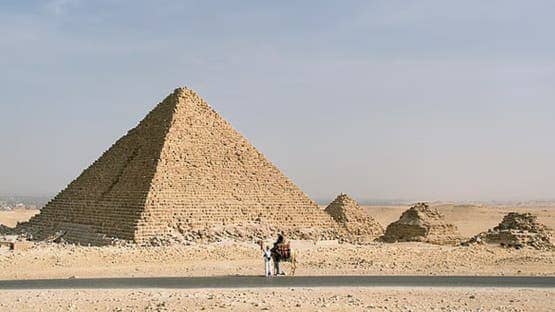Archaeologists Uncover Possible 'Secret Entrance' to Menkaure Pyramid in Giza

Recent archaeological excavations have revealed voids and mysterious anomalies on the eastern face of the Menkaure Pyramid, the smallest of the three Great Pyramids of Giza, suggesting the potential existence of an undiscovered secret entrance.
A joint research team from Egypt and Germany conducted an in-depth study of the pyramid, built around 2510 BC, utilizing non-invasive scanning techniques such as radar, ultrasound, and electrical tomography. The findings indicated the presence of "two anomalies" filled with air behind granite blocks in a specific area on the eastern facade.
Professor Christian Gross, a non-destructive testing expert at the Technical University of Munich, described the discovery as "a significant finding at Giza," adding, "The testing methodology we developed allows us to draw very precise conclusions about the nature of the pyramid's interior."
Gross further stated, "The hypothesis of another entrance is quite reasonable, and our results bring us closer to confirmation."
The suspected area, located on the east side facing the Nile, measures four meters high and six meters wide, with the granite blocks appearing "abnormally smooth," suggesting that a stone structure or cover may have existed in the past.
Independent researcher Stiggen van den Hoeven first proposed the hypothesis of this additional entrance in 2019, but it remained theoretical until now, supported by the new data.
The report noted that the arrangement and size of the two discovered voids are puzzling, yet together they "could support the hypothesis of a second entrance." While the main entrance of the pyramid is located on its northern side, where tourists currently traverse known burial chambers and corridors, the presence of a second entrance oriented to the east raises the possibility of uncovering undiscovered chambers or archaeological artifacts.
While the scientific team emphasizes that the results are reliable due to the combination of three different scanning techniques, they also stressed the need for "discussion of the interpretation of the discovered anomalies among Egyptologists" before drawing definitive conclusions.
